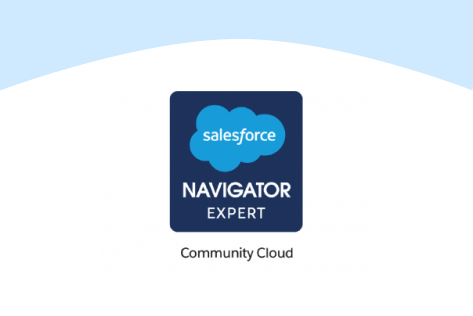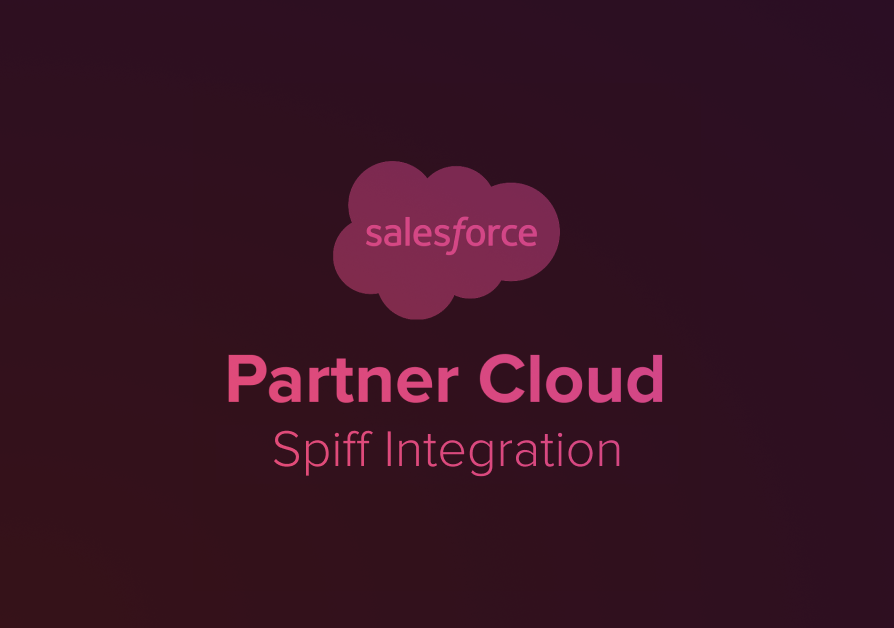Salesforce Partner Cloud Rebate Management: How to Boost Channel Sales and Automate Incentives
Salesforce Partner Cloud Fundamentals Part 1: Setting Up Rebate Management
If you manage a network of distributors or resellers, you already know how complex channel sales can get. From onboarding and enablement to deal registration, marketing development funds, and rebates — keeping partners motivated and aligned is a full-time job.
That’s exactly what Salesforce Partner Cloud was built for: to give companies a unified platform to manage every aspect of their partner relationships. One of its most powerful features is Rebate Management.
Rebates are a proven way to influence partner behavior, increase loyalty, and boost sales. But in most organizations, they’re still tracked in spreadsheets or siloed Enterprise Resource Planning (ERP) systems, which creates disputes, errors, and wasted time. Salesforce Partner Cloud Rebate Management changes that by providing a transparent, automated, and partner-friendly way to manage incentive programs.
At Advanced Communities, we specialize in helping businesses implement Partner Cloud end-to-end, and rebates are just one area where companies see fast results. In this article, we’ll walk through how Salesforce Partner Cloud Rebate Management works, the types of rebates it supports, and why integrating it with an Experience Cloud portal takes partner collaboration to the next level. Plus, we’ll share a step-by-step guide on how to set everything up in your Salesforce org.
Why Rebates Matter for Channel-Driven Businesses
Incentives are the fuel that keeps channel ecosystems running. Discounts may help close deals, but they don’t always encourage long-term loyalty or strategic growth. Rebates, on the other hand, are earned after the sale, once a partner hits agreed-upon targets like sales volume, revenue, or year-over-year growth.
This makes rebates especially powerful for companies that want to:
- Influence buying behavior by nudging partners toward specific products or categories.
- Encourage repeat business by rewarding ongoing sales performance.
- Promote higher volumes through tiered, volume-based rewards.
- Identify what works by analyzing which rebate programs deliver the most ROI.
But without the right system, rebate management quickly becomes messy. Many companies still rely on disconnected spreadsheets, ERP systems, manual approvals, and slow communication with partners. The result: calculation errors, disputes, and wasted admin time.
That’s where Salesforce Partner Cloud Rebate Management comes into play.
Salesforce Partner Cloud Rebate Management: A Smarter Way Forward
With Salesforce Partner Cloud, rebate programs are:
- Automated → Complex calculations are handled by Salesforce’s Data Processing Engine (DPE), not by manual spreadsheets.
- Transparent → Partners can log in via Experience Cloud to see their programs, claims, and payouts in real time.
- Scalable → Rebate structures can be tailored to match your business goals, whether you want to grow market share, drive adoption of new products, or reward long-term loyalty.
- Integrated → Everything lives inside Salesforce, alongside CRM, sales data, and partner relationship management — giving executives a unified view of channel performance.
At Advanced Communities, we see this feature as one of the fastest wins inside Partner Cloud. It immediately reduces admin overhead while making partners feel more confident and motivated.
Types of Rebates Supported in Salesforce
Rebate Management in Salesforce Partner Cloud supports several common types of rebates, which can be tailored with specific eligibility rules and benefit structures.
Let’s explore some of the common rebate types supported by Rebate Management. These can be customized with specific eligibility rules and benefit structures to align with your business goals.
Volume-Based Rebates
These rebates reward partners for achieving specific sales quantity targets. The payout is tied to the transaction quantity.
- Amount per Unit: A partner might receive a $5 rebate per unit for selling fewer than 100 units, and a $10 rebate per unit for selling more than 100 units.
- Percentage of Revenue: A partner could be offered a 3% rebate on total revenue if their transaction quantity is under 1,000 units, and a 5% rebate if the quantity exceeds 1,000 units.
Revenue-Based Rebates
These rebates reward members for hitting specific revenue goals, with the payout depending on the transaction amount.
- Amount per Unit: A partner could get a $1 rebate per unit for transaction amounts under $5,000 and a $2 rebate per unit for amounts over $5,001.
- Fixed Amount: A partner might receive a fixed $1000 rebate when their total transaction amount for a specific product category, like “Capacitors,” exceeds $20,000.
Growth-Based Rebates
These rebates are designed to reward partners for annual growth in sales volume or revenue. This is calculated by comparing a payout period to the same period in the previous year.
- Percentage of Revenue: An example is offering a 3% rebate on the current revenue when the growth in quantity sold exceeds 5,000 units compared to the previous year.
- Fixed Amount: A partner could receive a $750 rebate if their annual revenue growth is less than 5% and a $1,500 rebate if it exceeds 5%.
Flat Rebates
This type offers a flat reward for meeting a threshold and is used when payouts are not meant to be scaled.
- Fixed Amount per Product: A partner might get a $5 rebate per transaction for “Capacitor” products and a $10 rebate per transaction for “Screwdriver” products.
- Percentage of revenue: A 5% rebate on current revenue is offered for all transactions once the total quantity surpasses 1000 units.
Customizing Rebates with Benefit Mapping
Rebates can be made more granular by using benefit mappings, which add criteria to vary the benefits. For example, benefits can be differentiated by country or product. A company could offer a $5 per-unit rebate for Product A but an $8 per-unit rebate for Product B, even if the sales volume is the same for both.
Now let’s dive into the structure of rebates.
A rebate’s structure is built in a hierarchical way, starting with a broad program and then defining the specific rules, incentives, and qualifications within it. This entire framework is defined using a series of connected objects in the Rebate Management data model.

1. The Rebate Program: The Container
The highest-level component is the Rebate Program. This acts as a container for the entire incentive structure.
- Core Details: It defines the program’s name, its duration (start and end dates), its status (e.g., Draft, Active), and how often payouts are calculated (frequency, such as monthly or quarterly) .
- Members: You enroll accounts (like partners or distributors) into the program as Rebate Program Members. Only transactions from active members are eligible for payouts.
- Payout Periods: Based on the program’s frequency and duration, Payout Periods are generated. For example, a year-long program with a monthly frequency will have 12 payout period records. These define the specific windows during which transactions are processed.


2. The Rebate Type: The Incentive Logic
Within each program, you define one or more Rebate Types. This is where the core logic of the incentive is specified. It answers “how” the rebate works.
- Calculation & Aggregation: The rebate type specifies how payouts are calculated (e.g., Aggregate Based, Per Transaction) and what logic to use via a Data Processing Engine (DPE) definition. It also defines the object where aggregated transaction data is stored.
- Benefit Measurement: It determines what measure is used to grant the benefit. Key fields include:
- Measure Type: The kind of payout, such as an amount per unit, a percentage of revenue, or a fixed amount.
- Benefit Qualifier Field: The field used to determine which benefit tier a member qualifies for (e.g., Total Quantity).
- Calculation Method: How tiered benefits are applied, either Retrospective (the full benefit rate applies to the total amount) or Stepped (the benefit rate is apportioned across tiers).

3. Benefit & Eligibility Rules: The Fine Details
This final layer adds the specific rules and thresholds to the rebate type.
- Benefit Tiers: These define the specific ranges for sales targets and the corresponding reward for each range. For instance, selling 101-200 units earns a $20 rebate per unit, while selling 201+ units earns $30 per unit.
- Product Eligibility: You can specify which products are included in or excluded from the rebate calculation.
- Transaction Eligibility: You can define rules to filter which transactions are eligible for the payout. For example, you could filter for transactions coming only from the “Security Hardware” product line.
- Benefit Mappings: For more complex scenarios, you can use mappings to vary benefits based on additional criteria, like country or product category. For example, a partner in France might get a $22 benefit for a certain volume, while a partner in USA gets $25 for the same volume.


How to Create a Rebate Program: a Step-by-Step Guide
Step 1: Create the Rebate Program and Generate Payout Periods
First, create the main program that will act as a container for all the related rules and members.
- Navigate to Rebate Programs and click New.
- Define the core details:
- Name: A descriptive name for the program (e.g., Annual Rebates Program for AC Partners).
- Status: Set to Draft initially.
- Start Date and End Date: The duration for which the program is valid.
- Frequency: How often payouts are calculated (e.g., Monthly, Quarterly).
- Generate Payout Periods: Once the program is created, click the Generate Payout Periods button. This automatically creates the calculation periods based on the frequency you set. For example, a monthly program valid for a year will generate 12 payout periods.
Step 2: Enroll Members
A program needs participants. You can enroll partner accounts as members whose transactions will be eligible for payouts.
- From the program record, go to the Members related list.
- You can add a list of accounts at once by clicking Add Member List and selecting a pre-made Account List View.
- Ensure the Member Status is set to Active, as payouts are only calculated for active members.
Step 3: Define the Rebate Type and its Logic
This is where you define the specific incentive. Before creating the rebate type, you must clone and activate a Data Processing Engine (DPE) template, which contains the logic for how to aggregate transaction data.
- Clone a DPE Template: Go to Data Processing Engine in Setup, find a suitable template like Aggregate by Member with Aggregate Item Details, save a copy, and activate it .
- Create the Rebate Type: In your rebate program’s Rebate Types related list, click New.
- Specify Calculation Details:
- Name: Give the incentive a name (e.g., Volume-Based).
- Calculation Type: Choose how to process records, such as Aggregate Based.
- Calculation Definition: Select the active DPE definition you cloned earlier.
- Aggregation Object: The object that stores the aggregation results, e.g. Rebate Member Product Aggregate.
- Measure Type: Define the type of benefit, like Amount Per Unit or Percent of Revenue.
Benefit Qualifier Field: Specify the field that determines the benefit tier, such as Total Quantity.
Step 4: Add Benefit Tiers and Eligibility Rules
Now, add the specific rules for earning the rebate.
- Add Benefit Tiers: From the Benefits tab of your rebate type, create multiple tiers. For each tier, define a Minimum Range Value, a Maximum Range Value, and the Applied Benefit (the payout amount or percentage) . For example:
- Tier 1 (Basic): Range 0-50, Benefit $5
- Tier 2 (Intermediate): Range 51-100, Benefit $10
- Tier 3 (Advanced): Range 101+, Benefit $20
- Define Eligibility: You can set rules to filter which transactions qualify. For example, you can include only certain products or transactions from a specific product line like “Security Hardware” .
Step 5: Activate the Program
Once all the components are configured and ready, you can activate the program to start processing payouts.
- Ensure the rebate type and all its benefit tiers are set to Active.
- Change the status of the main Rebate Program from Draft to Active. This may require going through a pre-configured approval process.
Step 6: Populate Transactions and Run Calculations
With an active program, the system is ready to calculate payouts as transactions occur.
- Populate the Transaction Journal: Get transaction data into the system. This can be done by converting existing Salesforce Order records, having partners upload CSV files of claims, or using integration tools like Data Loader or APIs to import data from external systems.
- Run the Orchestration Flow: An administrator runs the Rebate Orchestration Flow. This automated process uses the DPE definition you configured to filter and aggregate the transaction data, calculate the payouts based on the benefit tiers, and update the payout records for each member.
Bringing Partners Into the Process: Setting Up Rebates on Salesforce Experience Cloud
One of the most important differentiators of Salesforce Partner Cloud is that it doesn’t just calculate rebates — it makes the process collaborative. By integrating Rebate Management into an Experience Cloud portal, partners gain:
- Self-service claim submission — upload proof of sales, invoices, or CSV templates directly.
- Automated validation — Salesforce checks data accuracy before processing, reducing disputes.
- Real-time visibility — partners track their programs, payouts, and progress toward higher tiers.
For executives, this transparency translates into stronger channel relationships. Instead of spending time on back-and-forth emails, partners focus on selling more, because they trust the system and can see their earnings clearly.
Creating the Partner Portal on Experience Cloud
The foundation of partner collaboration is the Experience Cloud site itself. An administrator can create a new site dedicated to partners, with the system providing a predefined Manufacturing Experience Cloud template to accelerate the process. Alternatively, Rebate Management components can be added to an existing site.
This digital workspace is then customized to give partners a central hub for all rebate-related activities. The goal is to provide them with direct visibility into the programs they are enrolled in and the payouts they have earned.

Empowering Partners with Self-Service Claim Submission
One of the most powerful features of the Experience Cloud integration is the ability for partners to submit their own proof-of-sale documents, such as invoices and claims.
The process is designed for simplicity and accuracy:
- Template-Driven Uploads: An administrator first provides the partner with a CSV header file template. This file’s structure corresponds to the fields in the system’s Transaction Journal object, ensuring data consistency.
- Partner Upload: The partner populates this CSV file with their transaction data for a specific period and uploads it directly through the portal’s “Upload Documents” feature.
- Automated Validation: The system automatically validates the uploaded file against standard business rules. If errors are found – such as incorrect formatting or missing data – the file processing is halted, and the partner is notified. They can then view the error details, correct the records in their file, and re-upload it for processing.
This automated validation loop significantly reduces administrative overhead and eliminates the error-prone, back-and-forth communication common in manual claim submission processes.
Providing Full Visibility into Performance and Payouts
Beyond submitting claims, the portal provides partners with a comprehensive view of their rebate activities. To enable this, an administrator must assign the Rebate Management for Experience Cloud Users permission set to partner users.
Once enabled, partners can access several key pages from the “Rebates” tab to monitor their engagement and earnings:
- My Programs: A list of all the rebate programs in which the partner is an active member.
- My Documents: A dashboard showing the processing status of all the claim documents they have uploaded, including which ones were successful and which ones failed.
- My Payouts: A detailed breakdown of the payout amounts they have earned for each rebate type within a specific payout period.

This transparency allows partners to track their progress toward higher benefit tiers, understand how their sales activities translate into rewards, and gain confidence in the entire incentive program.
Wrapping It Up: Rebates as Part of a Bigger Picture
Rebate Management is just one feature inside Salesforce Partner Cloud — but it’s often the one that delivers immediate impact. It gives executives better visibility into channel ROI, streamlines internal processes, and builds trust with partners.
At Advanced Communities, we help organizations go beyond rebates to implement the full Partner Cloud stack — including Spiff integration, PRM for Slack, Loyalty Management for B2B referrals, Revenue and Commerce Clouds, Agentforce, and more. Our approach ensures that rebates aren’t just an isolated incentive but part of a comprehensive partner growth strategy.





